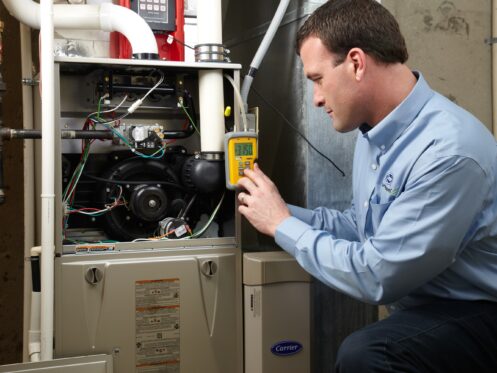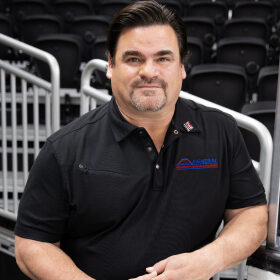Furnaces often work overtime during the winter to keep your home comfortable and to prevent seasonal problems like frozen pipes. If you suspect issues with your heating unit, it is important to deal with them quickly. Problems that seem minor at first can escalate into major emergencies that require furnace repair, and will prevent your home from heating when you need it most. Fortunately, there are clear indicators that help signify when it is time to schedule servicing for your appliance.
Difficulty Starting the Unit
Difficulty starting the unit is one of the foremost signs that it is time to schedule repairs. If you have to make multiple attempts to start or restart the unit to keep it running throughout the day, it is important to let a professional inspect the device and identify the root of the problem. The issue could stem from simple causes such as dirty filters or coils. It could also arise from faulty secondary heat exchangers, disconnected wiring, or damaged thermostats that make the furnace work intermittently. An HVAC technician may be able to fix the problem by repairing one component instead of requiring you to replace the furnace entirely.
Uneven Heating
Uneven or inconsistent heating throughout your home is another sign that your furnace needs repair. If you notice that some rooms feel excessively hot while others feel chilly, your heater may have problems with distribution or airflow components. Uneven heating may result from issues as simple as a clogged filter or damaged ductwork. Allowing a professional to evaluate the root cause of the issue can help ensure that warmth remains consistent throughout the household.
Strange Noises
Strange noises often sound that alarm that your furnace has mechanical problems that need repair. For example, rattling can indicate loose components, such as bolts or detached parts inside the furnace that need attention. Screeching or squeaking sounds signify issues with the blower motor or belt. Persistent or loud clicking is a common warning sign of problems with the furnace’s ignition. Banging or popping can indicate anything from a dirty burner to a more serious problem like a cracked heat exchanger. These noises can also convey the contraction or expansion of worn-out parts. Ignoring unusual sounds may lead to more extensive damage, so it is important to address these issues promptly to avoid costly breakdowns.
Unusual Odors
Furnaces should never emit strong or unusual odors. Bad smells often indicate that something is wrong with the appliance. For example, burning smells can signify the overheating of internal components. Musty smells may indicate the presence of mold or other contaminants within the appliance. Notably, gas or rotten egg odors can indicate a dangerous gas leak. A trained technician can identify the source of any strange odors to rule out serious problems and protect all home occupants.
Poor Indoor Air Quality
A malfunctioning furnace can also result in poor indoor air quality. Furnaces that have been poorly maintained can release dust and other particles during operation. Excessive debris or dry air can also indicate issues with your furnace’s filtration system. If anyone in your household has allergies, these contaminants can exacerbate symptoms like watery eyes, headaches, or respiratory problems. While resolving some furnace-related issues can be as simple as replacing the filter, a technician can diagnose and repair more complex filtration problems.
Higher Energy Bills
A sudden increase in utility bills with no corresponding changes in usage can indicate that your furnace needs servicing or repairs. Inefficient furnaces work harder to perform while producing less heat. Furnaces with malfunctioning thermostats or damaged blower fans can also run longer than necessary and drive up your energy expenses. Fixing efficiency problems can help you save money on winter heating costs in the long run. According to the U.S. Department of Energy, remaining consistent with recommended furnace maintenance and upkeep can help you save up to 30% on annual energy bills.
Frequent Short Cycling
Short cycling occurs when a furnace stops and restarts in short intervals. This erratic performance prevents the appliance from efficiently heating your home. Short cycling can increase energy or fuel consumption and put undue wear or tear on your unit. In contrast, an efficient furnace only turns off when indoor temperatures have reached the desired settings. Causes of short cycling include incorrectly calibrated thermostats, clogged filters, or overheating. Scheduling a repair can fix any of these issues before they cause permanent damage to the unit.
Yellowish Pilot Light
A healthy furnace flame is always blue. If your furnace flame is yellowish or orange in color, the furnace may have problems with combustion or the gas supply line. You should address this change in color immediately since natural gas leaks can increase the risk of carbon monoxide (CO) exposure. Carbon monoxide is a by-product of incomplete combustion, and prolonged exposure can result in illness or death. An experienced technician can check the pilot light for defects or the area surrounding the light for corrosion and ventilation. Any pilot light problems require urgent attention to eliminate the potential health or safety hazards.
Water Leaks
The area around your furnace should be dry and pristine. If you notice puddles of moisture around your furnace, you may have a water leak. This type of leak can result from a clogged condensation drain or damage to the condensate line. Another possible cause is a compromised seal on your unit’s evaporator coils. In less common cases, leaks can also result from internal drain system obstructions. If you have a humidifier connected to your furnace, any defects with this appliance can produce leaks near your heating unit.
Thermostat Errors
Discrepancies between a furnace’s thermostat reading and the temperature output can indicate a problem with the thermostat itself. These problems can result from dirty sensors, loose wiring, or corroded batteries. In any of these cases, you may need to repair the thermostat’s faulty components or use the opportunity to upgrade to a programmable or smart device.
Contact Us Today
Issues with furnaces rarely arise overnight. Instead, there are often telltale signs that your unit needs servicing or repairs. Allowing an issue to linger for months can often worsen the problem. If you have noticed any of the warning signs, there is no need to panic. The experts are here to help. General Air Conditioning & Plumbing provides furnace repair services for homes in Palm Springs, CA and surrounding areas. Our technicians can troubleshoot and repair both gas and electric furnaces. In addition to heating unit repair, we can also help you make the switch to electric heat pumps, and we offer tune-ups as needed. Our technicians can conduct AC installation and repairs as well as install ductless mini splits. We can help ensure indoor air quality via duct cleaning or the installation of air purifiers, humidifiers, dehumidifiers, or UV purification systems.
Need help with other issues such as plumbing, drain services, or electrical repair? Our licensed plumbers and electricians can provide residential services swiftly and effectively. No matter the question, we are here to help. Contact General Air Conditioning & Plumbing today for all of your home services needs.


